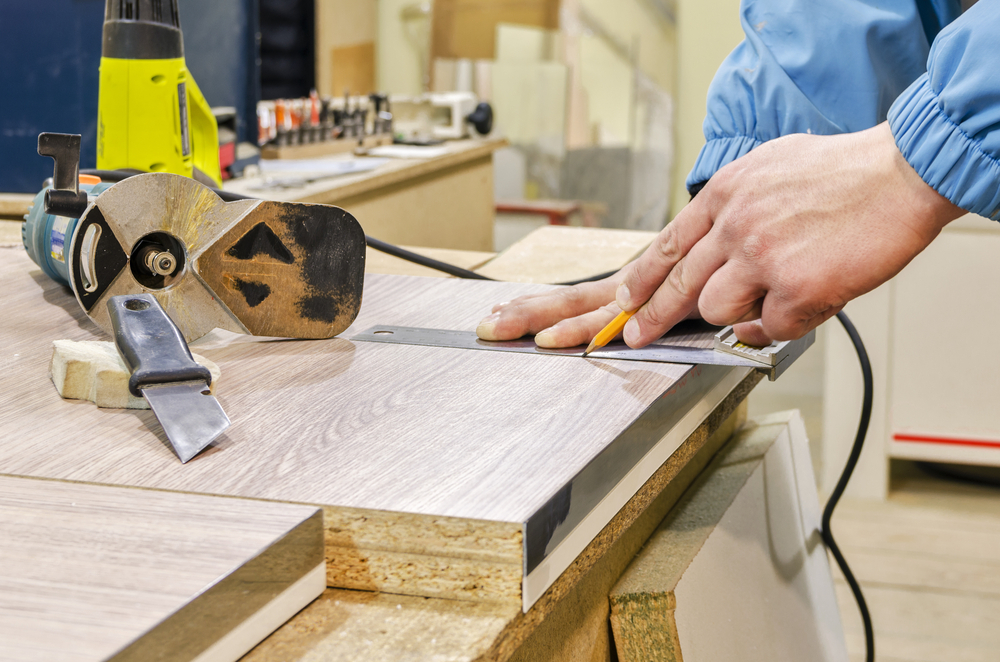MDF (medium-density fiberboard) and plywood are two popular choices for a wide range of projects, including furniture-making, cabinetry, and construction.
Choosing the right material for your project is important, as it can affect the strength, durability, and appearance of the finished product.
Contents
What is MDF?
MDF is a type of engineered wood product that is made from wood fibers that are mixed with resin and pressed into sheets under high heat and pressure.
The fibers used in MDF are typically smaller and more uniform in size than those used in other types of wood products, such as particle board. This allows for a smoother, more uniform surface.
MDF has a higher density than other types of particle board, and is generally stronger and more durable as a result. It is also relatively lightweight, making it easy to work with.
What is Plywood?
Plywood is a type of wood panel that is made by layering thin sheets of wood veneer on top of one another and gluing them together. The grain of each veneer sheet is typically oriented perpendicular to the adjacent sheet, which helps to improve the overall strength and stability of the plywood panel.
Plywood is available in a variety of thicknesses, ranging from 1/8 inch to 1 1/4 inches, and is generally stronger and more durable than MDF. It is also more moisture resistant, as the layers of wood veneer are less prone to swelling and warping when exposed to moisture.
Comparison of MDF and Plywood
Cost
MDF is generally less expensive than plywood, due to the lower cost of raw materials and the simpler manufacturing process. However, the cost difference can vary depending on the specific type and thickness of the material.
Strength and durability
Plywood is generally stronger and more durable than MDF, due to the layered construction and the fact that the grains of the wood veneer are oriented perpendicular to each other. However, MDF can be used in many applications where strength is not a critical factor, and it is often preferred for its smooth, uniform surface.
Moisture resistance
Plywood is more moisture resistant than MDF, as the layers of wood veneer are less prone to swelling and warping when exposed to moisture. This makes plywood a better choice for outdoor projects or for use in high-moisture environments.
Workability
MDF is generally easier to work with than plywood, due to its smooth, uniform surface and consistent density. However, plywood can be easier to cut and drill straight, due to its layered construction.
Uses for MDF and Plywood
MDF is often used for furniture-making, cabinetry, shelving, and other applications where a smooth, uniform surface is desired. It is also commonly used as a backing material for veneers, as it can be easily cut and shaped to fit.
Plywood is commonly used for construction, flooring, framing, and other applications where strength and durability are important. It is also used for creating curved surfaces, as it can be bent and shaped without breaking.
Advantages of MDF
MDF is generally less expensive than plywood, easy to work with, and has a smooth, uniform surface. It is also consistent in density and strength, which makes it well-suited for applications where these factors are important.
MDF is easy to work with, as it can be cut and shaped easily with standard woodworking tools. It also has a smooth, uniform surface, which makes it well-suited for painting and finishing.
MDF is consistent in density and strength, which makes it well-suited for applications where these factors are important.
MDF is widely available and can be purchased in a range of sizes and thicknesses, making it a convenient choice for many projects.
MDF is relatively lightweight, making it easy to handle and transport. This can be a particularly important consideration for large projects or for those who are working on their own.
Disadvantages of MDF
MDF is not as strong or durable as plywood, and is more prone to damage from moisture and heat. This makes it less suitable for use in high-stress or outdoor applications.
MDF tends to splinter and break more easily than plywood when it is cut or drilled, which can be frustrating for woodworkers.
MDF emits formaldehyde, a known carcinogen, during the manufacturing process and when it is cut or sanded. This can be a concern for people who are sensitive to formaldehyde or who are working with large quantities of MDF.
MDF is not as environmentally friendly as other types of wood products, as it requires more energy to manufacture and generates more waste. It is also not as recyclable as other types of wood, as the fibers are too small to be reused.
Wrap Up
MDF (medium-density fiberboard) and plywood are two popular materials that are used in a wide range of projects, including furniture-making, cabinetry, and construction. While they have many similarities, they also have some significant differences that make them better suited for different types of projects.
MDF is generally less expensive than plywood, easy to work with, and has a smooth, uniform surface. However, it is not as strong or durable as plywood, and is more prone to damage from moisture and heat. It is also less environmentally friendly and produces harmful fumes during the manufacturing process and when it is cut or sanded.
Plywood, on the other hand, is generally stronger and more durable than MDF, and is more moisture resistant. It is also more environmentally friendly and easier to recycle. However, it is more expensive than MDF and can be more difficult to work with, due to its layered construction.
When choosing between MDF and plywood, it is important to consider the specific needs of your project, including the desired strength and durability, moisture resistance, workability, and budget. By weighing the pros and cons of each material, you can make an informed decision that will help to ensure the success of your project.

